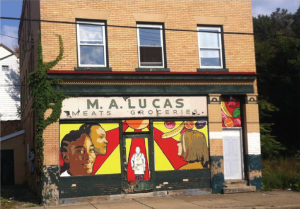A special NATIONAL HUNGER AWARENESS MONTH series |
|
|
|
One of the most basic causes of hunger is the lack of access to food. The problem of food access springs from the double whammy of financial hardship and physical barriers to getting healthy food.
Far too often, low-income families and individuals simply don’t have enough money to cover food and all other necessary expenses. And far too often, low-income neighborhoods lack places to buy the healthy foods commonly sold at grocery stores and supermarkets. These residents – without a car or the ability to take public transit – have no means of getting to neighborhoods that do.
These food-poor neighborhoods are called “CLAs” (communities with low-supermarket access) by social scientists and government officials, but they are more commonly known as “food deserts”. Residents of these communities often travel well over a mile to access good, affordable food.
A study we released in 2013 shows just how pervasive this problem of “food deserts” is in this area, and the results may shock you:
Just Harvest has been working with hunger and food access activists, food sustainabilitiy and community development agencies and institutions, as well as government officials and a few entrepreneurs to call attention to this serious problem and develop and tailor neighborhood-specific solutions. These solutions may include large grocery stores, community gardens, fresh produce trucks, or improving existing corner stores.
Our work on food access goes back to 1990, when we won the creation of the Pittsburgh Food Policy Commission. Several months later, the agency used our research on food access problems in the North Side as the basis for a “Shoppers’ Shuttle” to transport Northview Heights residents to a nearby Giant Eagle twice a week.
![]() A Menu for Food Justice: Our recent work on food deserts
A Menu for Food Justice: Our recent work on food deserts
A special NATIONAL HUNGER AWARENESS MONTH series |
|
|
|





No comments yet.